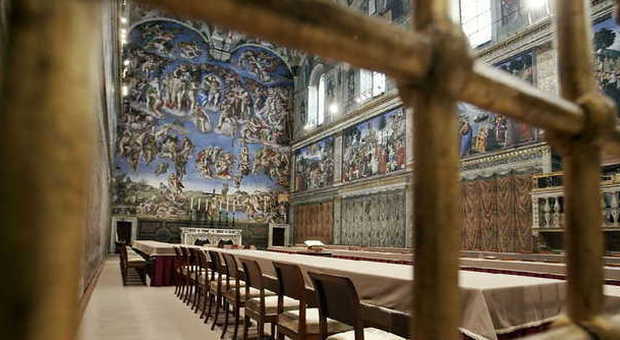VATICAN CITY - The Sistine Chapel has been closed to the public so it can be prepared for the conclave, one of the world's most secret and mysterious rites, which it will host for the 25th time. The Vatican Museums said in a statement Tuesday that the chapel will remain closed �until further notice� so it could be prepared to host a gathering of cardinals and then for the conclave itself to elect Benedict XVI's successor. Workers started making things ready on Tuesday afternoon. The Borgia Apartment and the Collection of Modern Religious Art at the Vatican Museums will also be off limits until after the conclave. Twenty four conclaves have so far been held in what remains, in spite of the great number of tourists and pilgrims visiting daily, a papal chapel - a location that symbolises the Catholic Church.
Since 8pm local time on February 28, 2013, the beginning of the Apostolica Sede Vacans (vacant seat) after which Benedict, 85, officially ceased to be pope, a team of 40 people was prepared to recreate in the Sistine Chapel a photocopy of previous conclaves so that everything will remain unchanged throughout the centuries. Traditions that are over a thousand years old will be perpetuated even in the smallest details, something rendered possible by the extensive photographic documentation. The team is coordinated by engineer Paolo Sagretti, who is in charge of the Vatican City's Floreria, putting him in charge of, among other things, the arrangements for audiences, pontifical ceremonies and the interior decoration of the conclave. The Sistine Chapel - which became the official location of the conclave only in 1996 with the Apostolic Constitution Universi Dominici Gregis of John Paul II - will be decorated with 115 chairs made of cherry wood for the cardinal electors with seating assigned by place cards and 12 wooden tables covered with beige cloth and burgundy satin.
Six tables are placed on the right side of the chapel and six on the left, arranged in two rows at different levels. Before the altar, under Michelangelo's masterpiece The Last Judgement, another table will be used to place an urn to contain used ballots and a Gospel on which cardinals will take an oath. Cardinals will not walk on the tiled floor of the chapel but on a wooden platform covered in a beige cloth built about 50-60 centimeters above the pavement on the same level as the second step of the altar. The voting bags containing the ballots and the place cards with the cardinals' names will soon be ready. Cardinals will have a pen, a red folder and a ballot.
According to a tradition which dates back to 1939, with the conclave which elected Pope Pius XII, a stove - which sits at the back of the chapel and consists of a two-part device - will be used to burn ballots. But this time another stove will produce the smoke that indicates whether the cardinals have elected a new pope. The results of votes are visible from the colour of the smoke coming from the chimney on the roof of the Sistine Chapel - black smoke will signal that a majority has not been reached, white smoke will announce the election of a new pontiff. The cast-iron stove, shaped like a tapered cylinder, is one meter high and has an average diameter of 45 centimetres with an opening below used to start it, and a manual valve for damper adjustment, and an opening above to introduce the documents to be burned. Etched on the top of the stove are the dates of papal elections and the names of the last six pontiffs.
